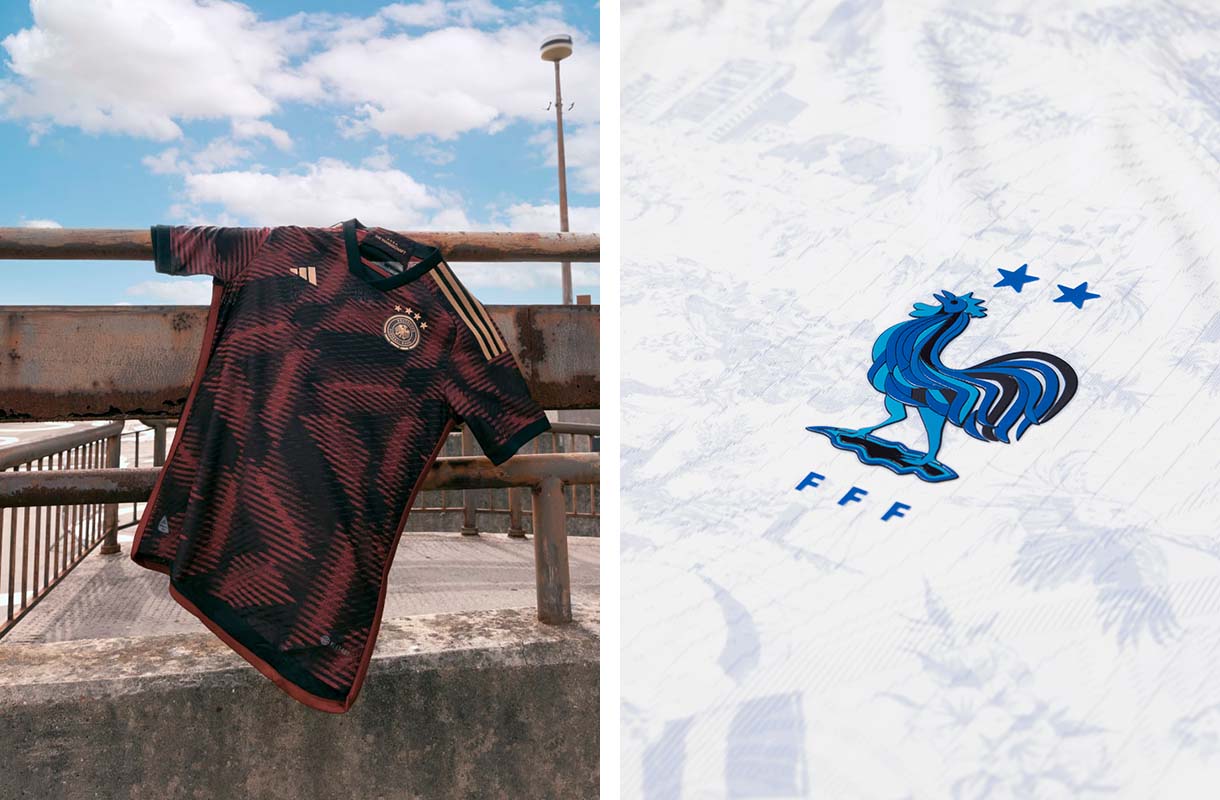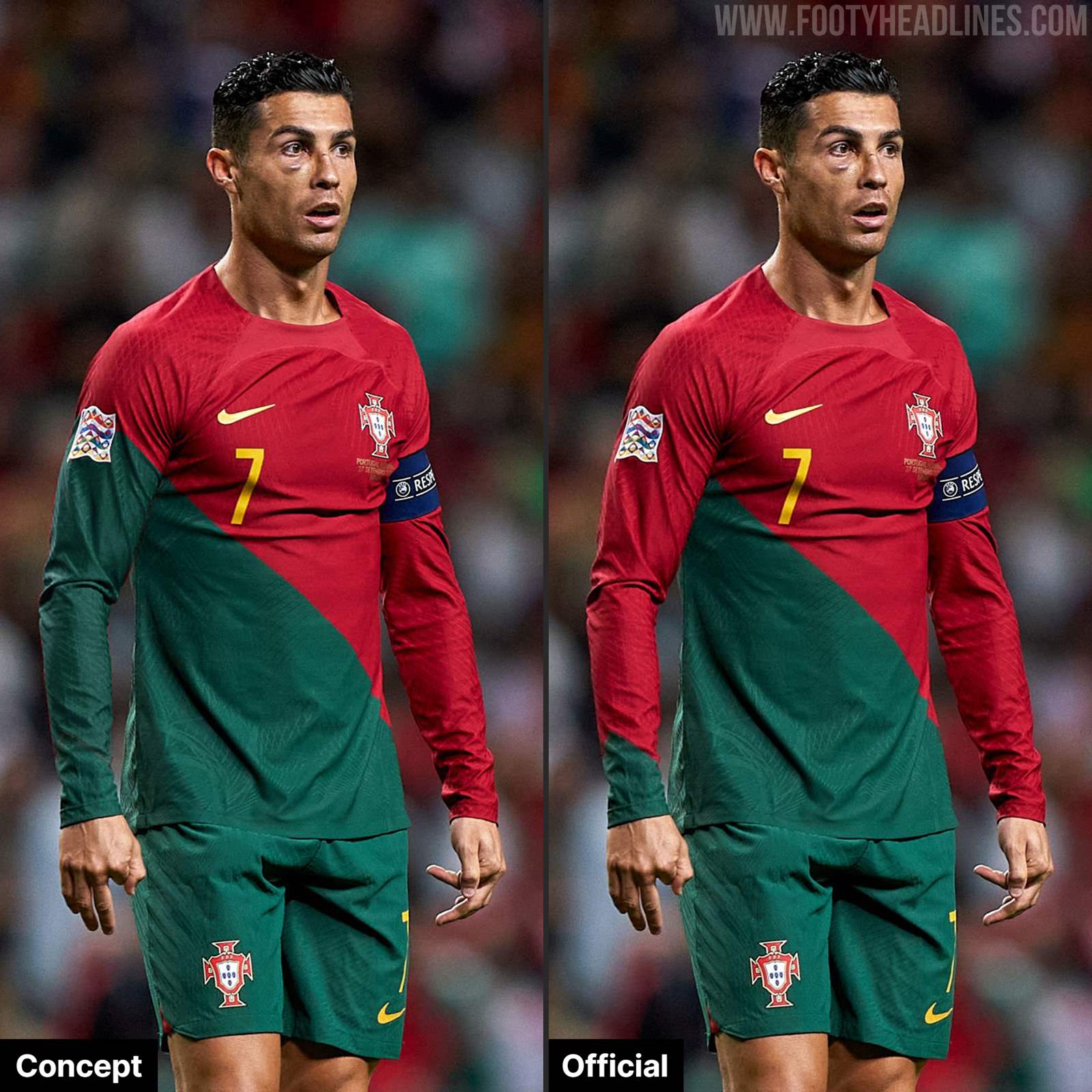There were plenty of 2022 World Cup kits that we were excited to see on the pitch, yet never got the chance to. We explore why.
Fresh off the heels of one of the spiciest World Cups in history, there have been plenty of storylines and debate topics that various pundits and Twitter users have pounced upon. Lionel Messi’s status as both the greatest of his era and of all time, Kylian Mbappe’s rapid ascension, tournament rigging, and a strong dose of copium for Cristiano Ronaldo fans have been all over our timelines since the instant classic World Cup final on Sunday.
But there’s been one topic less discussed, one that we here at Urban Pitch care greatly about. What was with the lack of away kits at the 2022 World Cup?

To put it in perspective, the following teams only wore one of their shirts throughout the entire tournament: Ghana, Cameroon, Belgium, Germany, Japan, France, Tunisia, Mexico, Poland, England, Wales, and the Netherlands.
Spain, Croatia, and Senegal wore just their home kits in the group stage, but had a chance to wear their aways in the knockout rounds, coincidentally all matches they lost in. Out of a total of 96 opportunities in the group stage (two kits per match, 48 total matches), the away kit was only worn 22 times.
This was quite a shame, as a handful of the above clubs — most notably Japan, Mexico, and England — had fantastic away shirts that more than deserved to be worn on the world’s biggest stage.
Like many of soccer’s ills, we can blame FIFA for the lack of kit diversity at the 2022 World Cup. The global governing body has a set of draconian kit regulations that are equally outdated as they are unnecessary.
FIFA has an in-depth section in its rule book that outlines the selection process of what jerseys are worn each game, as well as what jerseys are allowed to look like. These rules stipulate that teams must have an “official” (aka home) and “reserve” (aka away) kit. Teams submit the colors of each kit, along with three contrasting goalkeeper shirts, to FIFA ahead of the tournament.

According to the regulations, the official kit will be worn by each team unless there is a color contrast, to which then one team will wear its reserve kit. In some instances, teams may have to wear a combination of their home and reserve kits to avoid further confusion, as France did in the final against Argentina. Essentially, a national team’s away kit is a “push in case of emergency” button that’s only worn against countries with similar colors.
While this is all simple enough to understand, ultimately, it’s boring. Especially in major tournaments, with the world watching, teams should be able to wear their alternate kits if there is no potential cause for confusion. FIFA should only step in when it needs to, and give teams more freedom to operate.
The communication barrier has never been lower in the history of the sport. Whereas in years past, letting a team know which kits you plan on wearing ahead of time could mean a series of phone calls, transfers, or written messages, a simple text message to a team equipment manager is all it would take in today’s age.
Additionally, the whole concept of home and away jerseys became moot as soon as third or alternate jerseys became more popular. Teams like Napoli and PSG have four or more jerseys per year, and while they may wear some of them only in specific situations, the teams they play are able to adapt and prepare regardless.

On the other side of this is when organizations like FIFA and UEFA ban specific jersey designs for wildly arbitrary reasons. For example, we were robbed of what could’ve been a beautiful Portugal long sleeve kit at this World Cup. The nation’s home jersey has an asymmetrical green and red design, which when theoretically carried over to the long sleeve version, would continue onto the right sleeve. However, shirts with different colored sleeves are banned by FIFA (more like Fun-Inhibiting Football Association, amirite?), and Portugal was forced to have both sleeves in red.
That leads me to my final questions: Why does the largest sporting organization in the world struggle to come to simple solutions and execute at even a baseline level of competence? Why can’t we have nice things?








